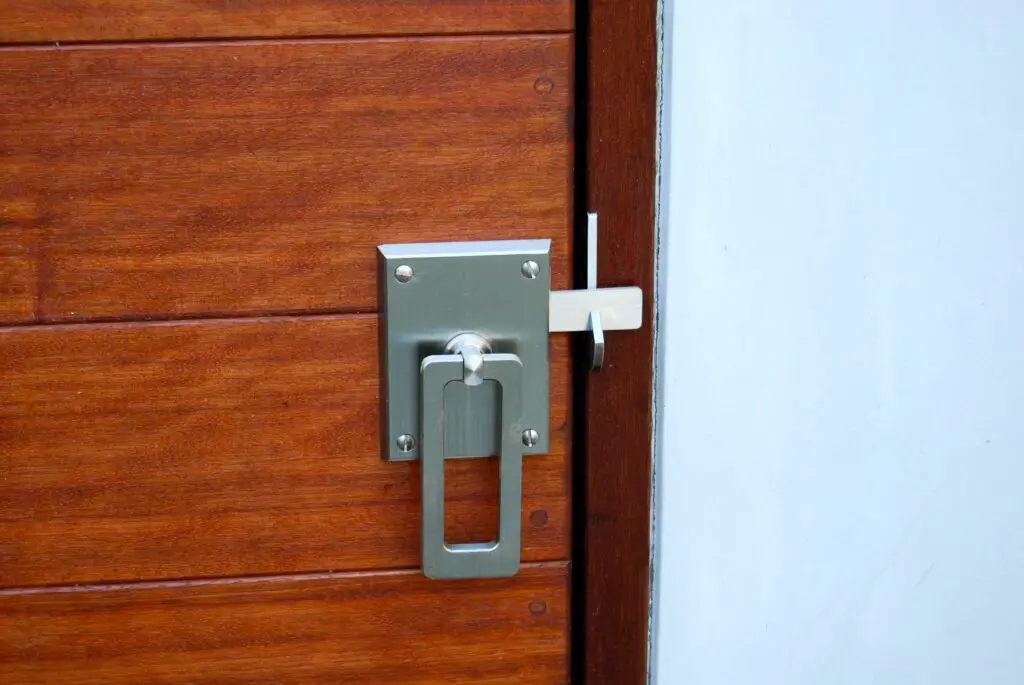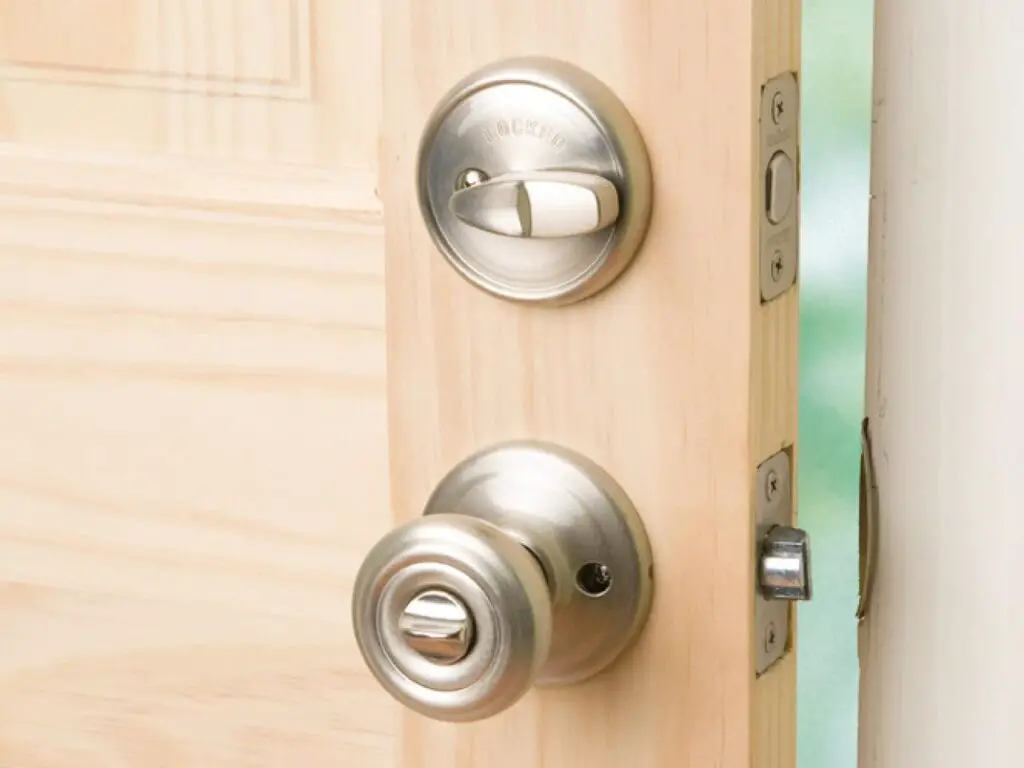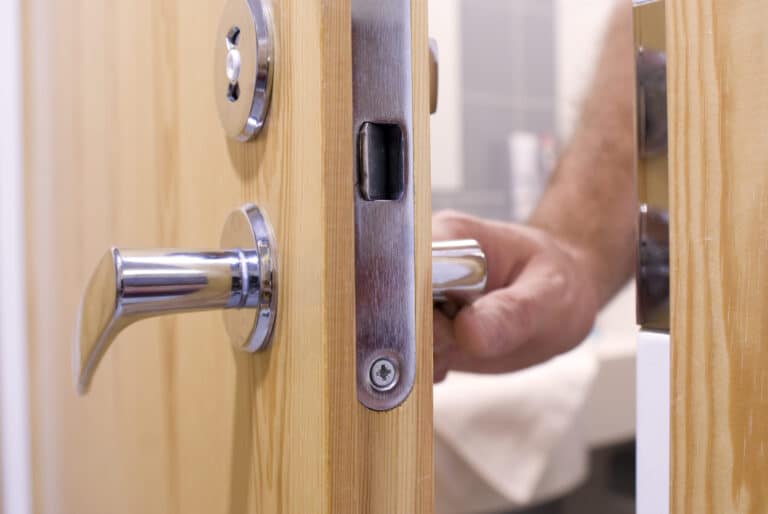Introduction
How To Open Locked Bathroom Door: Are you currently facing the frustrating situation of a locked bathroom door. Don’t worry, you’re not alone. It’s a common problem that many people encounter at some point in their lives. Whether you accidentally locked the door and left the key inside, or the lock is malfunctioning, being unable to access your bathroom can be incredibly inconvenient and stressful. However, there are several methods you can try to open a locked bathroom door, and this article will guide you through them.
Before we delve into the various techniques, it’s important to note that the method you choose will depend on the type of lock on your bathroom door. There are different types of locks, including privacy locks, deadbolts, and key locks. Each type requires a different approach to unlock it. Therefore, it’s crucial to identify the type of lock you’re dealing with before attempting any of the methods mentioned in this article.
If you’re unsure about the type of door lock on your bathroom door, take a moment to examine it. Privacy locks are typically found on interior doors and have a small hole on the outside knob. Deadbolts are often used on exterior doors and have a thumb turn on the inside and a keyhole on the outside. Key locks, as the name suggests, require a key to unlock them. Once you’ve determined the type of lock, you can proceed with the appropriate method to open it.
Now that you have a basic understanding of the situation and the importance of identifying the lock type, let’s explore the different methods you can use to open a locked bathroom door. From using simple household items like bobby pins and credit cards to more advanced techniques like lock picking, we’ll cover a range of options to help you regain access to your bathroom. Remember, it’s always best to start with the least invasive methods and gradually move on to more complex ones if necessary.

How to unlock a lock without the key?
Unlocking a lock without the key can be a challenging task, but it is not impossible. There are several methods and techniques that can be used to bypass a lock and gain access without the key. However, it is important to note that attempting to unlock a lock without the key may be illegal and unethical, and should only be done in emergency situations or with proper authorization.
One of the most common methods used to unlock a lock without the key is picking the lock. Lock picking involves manipulating the lock’s pins or tumblers to align them in such a way that the lock can be turned and opened. This method requires a set of lock picking tools, such as a tension wrench and a variety of picks, and a good understanding of how locks work. It is a skill that takes time and practice to master, and should only be used by trained professionals or individuals with proper authorization.
Another method that can be used to unlock a lock without the key is using a bump key. A bump key is a specially cut key that can be used to quickly and easily open a lock by applying pressure and then striking the key to create a bumping motion. This method is relatively easy to learn and can be effective on certain types of locks, but it may not work on all locks and can potentially damage the lock or the key.
In some cases, it may be possible to unlock a lock without the key by using a shim. A shim is a thin piece of metal or plastic that can be inserted into the space between the lock’s bolt or latch and the strike plate to push the bolt or latch out of the way and open the lock. This method requires a certain level of skill and precision, and may not work on all types of locks.
It is important to remember that attempting to unlock a lock without the key may be illegal and can result in criminal charges. It is always best to seek professional help or contact the appropriate authorities if you find yourself locked out and in need of access.
How do bathroom door locks work?
Bathroom door locks are an essential component of any bathroom, providing privacy and security to the user. These locks are designed to prevent unauthorized access and ensure that the bathroom is occupied only by the intended user. But have you ever wondered how these locks actually work?
At a basic level, bathroom door locks consist of two main components: the lock mechanism and the door handle. The lock mechanism is responsible for securing the door in place, while the door handle allows the user to open and close the door. When the door is locked, the handle is typically unable to turn, preventing anyone from entering the bathroom.
The lock mechanism itself can vary depending on the type of lock used. One common type of bathroom door lock is the privacy lock, which is typically found in residential bathrooms. This type of lock features a simple push-button mechanism. When the button is pushed in, it engages a latch that prevents the door handle from turning. To unlock the door, the button is simply pulled back out, disengaging the latch and allowing the handle to turn.
Another type of bathroom door lock is the indicator lock, commonly found in public restrooms. This type of lock features a sliding indicator on the outside of the door that displays whether the bathroom is vacant or occupied. When the door is locked from the inside, the indicator slides to the “”occupied”” position, alerting others that the bathroom is in use. To unlock the door, the user simply turns the handle, which retracts the latch and moves the indicator to the “”vacant”” position.
In addition to these basic lock mechanisms, some bathroom door locks may also incorporate additional features for added security. For example, some locks may have a keyhole on the outside, allowing the door to be unlocked with a key in case of an emergency. Others may have a thumbturn on the inside, allowing the user to lock and unlock the door without the need for a key.
Do bathroom doors have locks?
Yes, bathroom doors do have locks. Locks on bathroom doors are essential for privacy and security. They allow individuals to have a sense of privacy while using the bathroom and prevent others from accidentally walking in on them. Bathroom locks come in various types and designs, depending on the specific needs and preferences of the user.
One common type of lock found on bathroom doors is the privacy lock. This type of lock is typically installed on residential bathroom doors and is designed to be easily locked and unlocked from the inside. Privacy locks often have a simple mechanism, such as a thumbturn or a push-button, that can be easily operated with one hand. These locks are usually not equipped with a key, as they are intended for use within the household.
Another type of lock commonly found in public restrooms is the indicator lock. These locks are often used in commercial settings, such as restaurants, offices, and shopping malls. Indicator locks have a unique feature that allows users to see whether the bathroom is occupied or vacant. When the lock is engaged, a colored indicator on the outside of the door, usually red, signals that the bathroom is in use. This helps prevent awkward encounters and ensures that individuals have the privacy they need.
In addition to privacy and indicator locks, some bathroom doors may also have key locks. Key locks provide an extra layer of security and are often used in public restrooms that require controlled access, such as those in airports or train stations. These locks can only be unlocked with a specific key, which is typically held by authorized personnel. Key locks are designed to prevent unauthorized entry and ensure the safety of the individuals using the facilities.
What are all the possible codes for a 3 digit lock?
A 3-digit lock can have a total of 1000 possible codes. This is because each digit can range from 0 to 9, giving us 10 options for each digit. Since there are 3 digits in the lock, we can calculate the total number of possible codes by multiplying the number of options for each digit together: 10 x 10 x 10 = 1000.
Let’s break it down further. The first digit can be any number from 0 to 9, so we have 10 options for the first digit. Similarly, the second digit can also be any number from 0 to 9, giving us another 10 options. Finally, the third digit can also be any number from 0 to 9, resulting in 10 options once again. Multiplying these options together gives us the total number of possible codes.
It’s important to note that the order of the digits matters in a 3-digit lock. For example, the code 123 is different from the code 321. This means that all 1000 possible codes are unique and distinct from each other.
Additionally, it’s worth mentioning that a 3-digit lock can have both repeating and non-repeating codes. A repeating code is one where the same digit appears multiple times, such as 111 or 999. On the other hand, a non-repeating code is one where each digit is different, such as 123 or 456. The total number of repeating and non-repeating codes can be calculated separately, but both types are included in the overall count of 1000 possible codes
When faced with a locked bathroom door, there are several effective methods you can try to open it. One common method is to use a credit card or a thin, sturdy object to slide between the door and the door frame. Gently wiggle the card up and down while applying pressure towards the latch. This can sometimes disengage the latch and allow the door to open.
Another method is to use a screwdriver or a similar tool to remove the doorknob. Look for a small hole or slot on the doorknob and insert the tool into it. Apply pressure and turn the tool to release the latch mechanism. This method requires some skill and caution to avoid damaging the door or the doorknob.
If these methods don’t work, you can try using a lock-picking set or calling a professional locksmith. Lock-picking requires knowledge and practice, so it’s best to leave it to the experts. A locksmith has the necessary tools and expertise to open the door without causing any damage.
Are there any specific tools or techniques that can be used to unlock a bathroom door?
When it comes to unlocking a locked bathroom door, there are several specific tools and techniques that can be used depending on the type of lock. One common tool is a screwdriver, which can be used to remove the screws on the door handle and gain access to the locking mechanism. Another tool that can be effective is a credit card or a thin piece of plastic. By sliding the card between the door and the door frame, you can try to push the latch back and unlock the door.
For more advanced locks, such as deadbolts or keyless entry systems, specialized tools may be required. Lock picking tools, such as lock picks and tension wrenches, can be used to manipulate the lock pins and unlock the door. However, it is important to note that lock picking should only be done by professionals or individuals with proper training to avoid causing further damage to the lock.
Are there any potential risks or damages that could occur when attempting to open a locked bathroom door?
When attempting to open a locked bathroom door, there are potential risks and damages that could occur if not done properly. One of the main risks is causing damage to the door itself. Using excessive force or the wrong tools can result in scratches, dents, or even broken parts of the door. This can be especially problematic if you are renting the property or if the door is made of a delicate material.
Another risk is damaging the lock mechanism. If you are not familiar with the specific type of lock on the bathroom door, attempting to unlock it without proper knowledge or tools can potentially damage the lock, making it even more difficult to open or requiring a complete replacement. This can be costly and time-consuming to fix.
Are there any alternative solutions or professionals that can be contacted to open a locked bathroom door?
When faced with a locked bathroom door, there are alternative solutions and professionals that can be contacted to help open it. One alternative solution is to try using a credit card or a thin, sturdy object to slide between the door and the door frame. By gently wiggling and pushing the card or object, you may be able to disengage the lock mechanism and open the door. However, it is important to note that this method may not work on all types of locks and could potentially damage the door or the lock.
If the alternative solution does not work or if you are uncomfortable attempting it, it is advisable to contact a professional locksmith. Locksmiths are trained and experienced in dealing with various types of locks and can efficiently open a locked bathroom door without causing any damage. They have specialized tools and techniques that allow them to unlock doors quickly and effectively. It is important to choose a reputable locksmith who is licensed and insured to ensure a reliable and secure service.
Are there any preventative measures or tips to avoid getting locked out of a bathroom in the future?
Getting locked out of a bathroom can be a frustrating experience, but there are several preventative measures and tips that can help you avoid this situation in the future. One important tip is to always make sure that the bathroom door is unlocked before closing it. This may seem obvious, but it’s easy to forget, especially if you’re in a rush. Taking a moment to double-check the lock can save you from the inconvenience of being locked out.
Another preventative measure is to keep a spare key or a doorstop nearby. Having a spare key hidden in a safe place, such as a nearby drawer or under a mat, can provide a quick solution if you do find yourself locked out. Alternatively, using a doorstop to prop the door open while you’re inside can prevent it from accidentally locking. This is especially useful if you have young children who may accidentally lock the door while playing.

Conclusion
Overall, opening a locked bathroom door can be a frustrating experience, but with the right tools and techniques, it is possible to regain access without causing any damage. It is important to remain calm and patient throughout the process, as rushing or using excessive force can lead to further complications. By following the steps outlined in this guide, individuals can successfully open a locked bathroom door and resume their daily activities.
First and foremost, it is crucial to assess the situation and determine the type of lock on the bathroom door. Different locks require different methods of opening, so understanding the specific lock mechanism is essential. Whether it is a simple privacy lock or a more complex deadbolt, knowing what you are dealing with will help you choose the appropriate tools and techniques.
Next, it is important to gather the necessary tools. Common tools for opening a locked bathroom door include a screwdriver, a credit card or plastic card, a paperclip, or a lock-picking set. These tools can be easily found around the house or purchased at a local hardware store. It is important to note that using these tools should be done responsibly and only for the purpose of opening a locked door that you have permission to access.
Finally, it is crucial to approach the task with caution and patience. Trying to force the door open or using excessive pressure can lead to damage to the lock or the door itself. It is important to apply gentle and controlled pressure when using tools such as a screwdriver or credit card. Additionally, if attempting to pick the lock, it is important to take your time and carefully manipulate the pins or tumblers until the lock releases.

